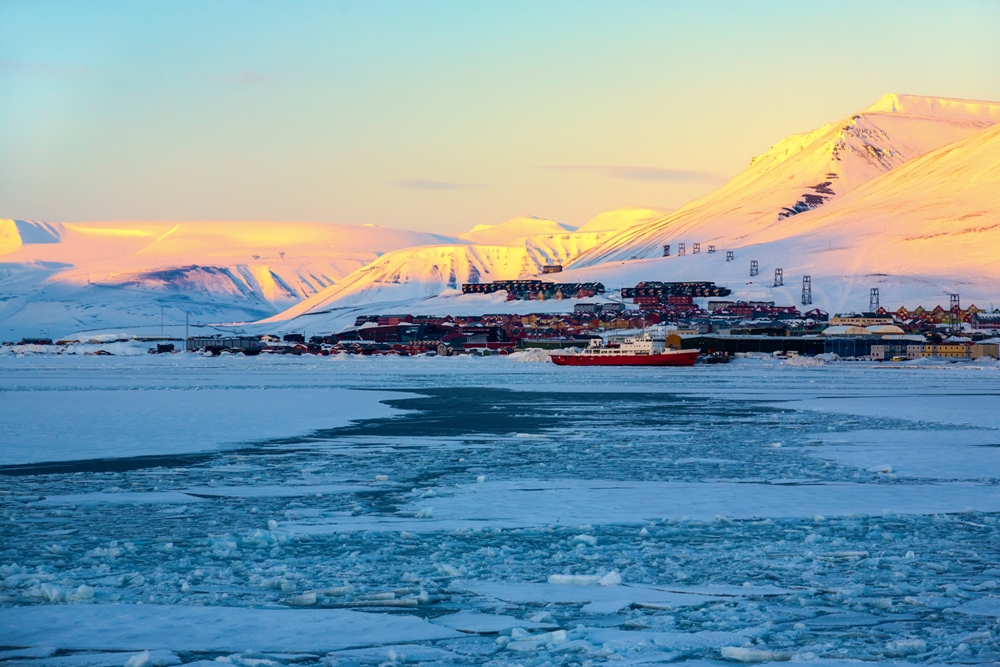 The Svalbard Islands fascinate tourists with the abundance of wildlife unique to the area, the arctic nature of the region, as well as the mining towns long since closed down – all starkly and eerily beautiful in their own right.
The Svalbard Islands fascinate tourists with the abundance of wildlife unique to the area, the arctic nature of the region, as well as the mining towns long since closed down – all starkly and eerily beautiful in their own right.
About 4000 polar bears and 3000 humans call these islands home, about 2000 of those humans residing in Longyearbyen, the relative capital and biggest settlement within the islands. Longyearbyen started out as a small, typical village and has since become a rather modern town with various business and industry. For its size, Longyearbyen also has a wide variety of cultural amenities and activities in which to take part. The local fare is arctic, and the quality surpasses that you might expect to find in such a small, faraway place on the planet, including a sushi place and Svalbard’s own local brewery.
History’s first mention of Svalbard was in the 1100s, in Icelandic books. The name means “cold coasts” – perhaps because of the region’s close proximity to the North Pole – however, the area’s average temps are actually quite mild in comparison to other of the latitude’s areas. For instance, Longyearbyen’s usual temps range from 6 degrees Fahrenheit in the winter months to summertime “heatwaves” of 42 degrees Fahrenheit. Despite these relatively moderate temperatures, it isn’t unusual for winter temps to dip to -4 to -22 degrees Fahrenheit.
Fog is a common occurrence in the summer months, but precipitation is rather low making Svalbard what is known as “Arctic desert” – annual rainfall/snowfall amounts typically ranging from 7 to 11 inches. It isn’t uncommon for localized points to have various shifts in temps and precipitation; however, the above are the norms.
In the region’s archipelago, whaling and other trapping have been major activities of commerce, but more recently the focus has been changed to sustainability, resulting in more than 2/3 of the area’s surfaces becoming protected lands – nature preserves, national parks, and bird sanctuaries.
These islands have preserved a time in history when things were simpler, and the attitudes among locals are of brotherhood and caring.
Connect with Us!